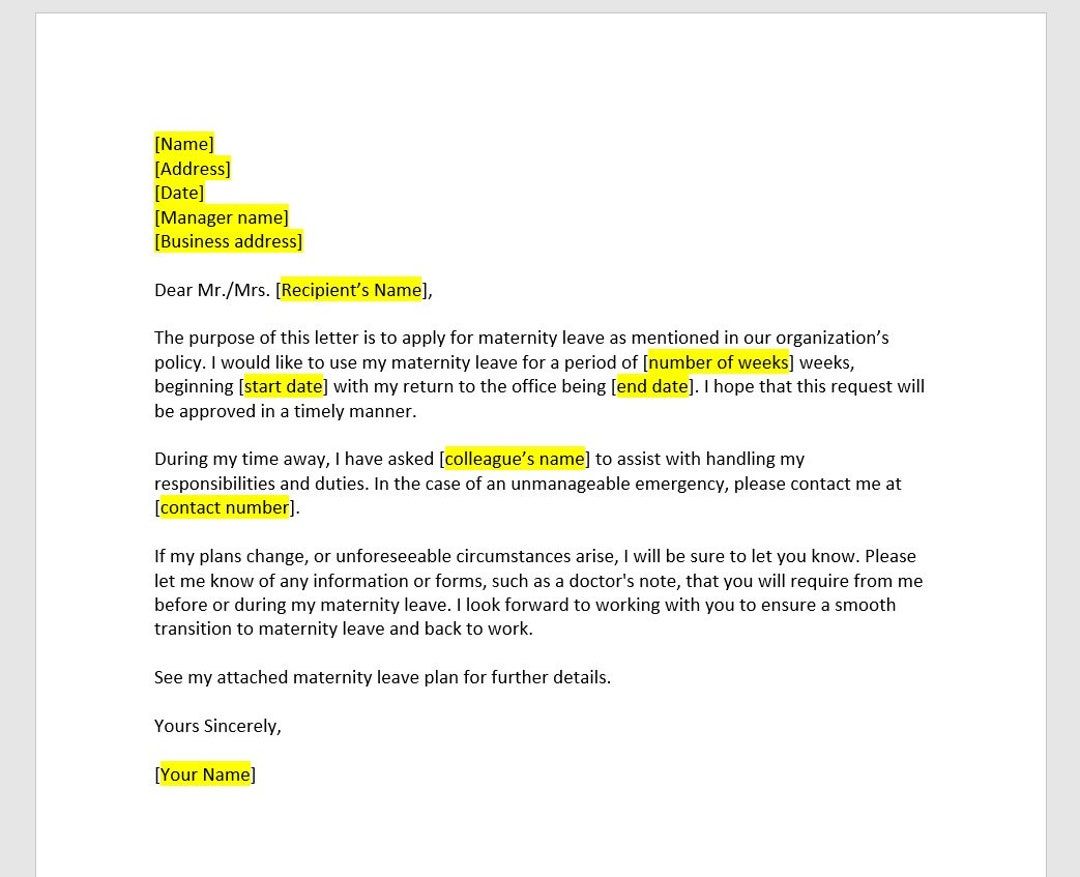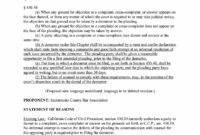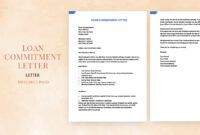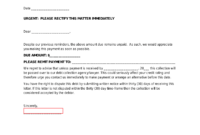Becoming a parent is an incredibly exciting journey, filled with anticipation and joy. While your mind is likely buzzing with nursery ideas and baby names, there are also practical steps to manage as you prepare for this wonderful new chapter. One of the most important administrative tasks is notifying your employer about your upcoming maternity leave, ensuring a smooth transition for both you and your workplace.
Crafting this notification can feel a bit daunting amidst everything else, but it doesnt have to be. A well-structured letter not only formally communicates your plans but also initiates important discussions about coverage and your return. This article aims to simplify that process by providing a clear guide and a helpful framework for a strong letter template for maternity leave that addresses all the necessary points without adding extra stress.
What to Include in Your Maternity Leave Letter
Your maternity leave letter serves as an official document informing your employer of your intention to take time off to welcome your new arrival. It is crucial for outlining key dates and ensuring compliance with company policies and legal requirements, such as the Family and Medical Leave Act (FMLA) in the United States, or similar provisions in other regions. This formal communication also sets the stage for a productive conversation with your manager about your responsibilities before and after your leave.
Typically, this letter should be concise yet comprehensive, providing all the essential information your employer needs to process your leave correctly. It acts as a starting point for planning your absence and ensures that both parties are on the same page regarding expectations and timelines. Dont view it as just a formality; rather, see it as a tool for clear and effective communication that protects your rights and helps your team prepare.
Beyond the basic dates, consider any specific company policies that might require additional information or a particular format. Some organizations have detailed guidelines regarding benefits continuation during leave, while others might ask for clarity on how you prefer to be contacted, if at all, during your time away. Being proactive in understanding these nuances can prevent confusion later on.

A well-prepared letter also demonstrates your professionalism and commitment to a smooth handover. It shows that you are thinking ahead and are dedicated to ensuring your work is covered while you are away, minimizing disruption for your colleagues and clients. This thoughtful approach can go a long way in maintaining positive professional relationships.
Key Components to Consider
- Your Full Name and Address
- The Current Date
- Your Employer’s Name and Address
- Your Direct Manager’s Name and Title
- A Clear Statement of Your Intention to Take Maternity Leave
- Your Expected Due Date
- The Proposed Start Date of Your Maternity Leave
- Your Expected Return to Work Date
- Your Contact Information During Leave (if applicable and desired)
- An Offer to Assist with the Transition of Your Work Responsibilities
- A Request for Information Regarding Company Maternity Leave Policies and Benefits
Tips for Personalizing Your Maternity Leave Notification
While a letter template for maternity leave provides an excellent foundation, personalizing your notification is crucial for tailoring it to your specific situation and fostering a collaborative approach with your employer. Remember, this letter is a formal notice, but the conversation surrounding it should be much more nuanced and personal. Its a chance to discuss your specific needs and how your team can best manage in your absence.
Before you even put pen to paper, it is highly recommended to schedule a meeting with your direct manager. This face-to-face or virtual conversation allows you to verbally communicate your plans, discuss potential handovers, and address any immediate questions they might have. Presenting the formal letter after this discussion ensures that your manager is already aware and can process the information more effectively.
During your conversation and in your personalized letter, be proactive in outlining how you plan to prepare for your absence. This might include creating a detailed handover document, training a colleague to cover your tasks, or completing urgent projects before your leave begins. Showing this initiative demonstrates your professionalism and commitment to your role, even as you prepare for a significant personal change.
Consider the unique dynamics of your workplace and your role. If you have specific projects or client relationships that require careful transitioning, mention these in your discussion and letter. Your personalized approach should reflect your understanding of your responsibilities and your desire to ensure continuity for your team. This thoughtful planning can significantly ease the process for everyone involved.
- Research your company’s specific maternity leave policies well in advance.
- Schedule a meeting with your direct manager to discuss your plans before submitting the formal letter.
- Be clear about your intentions for returning to work or if you plan to extend your leave.
- Offer to create a comprehensive transition plan for your responsibilities.
- Keep a copy of your submitted letter and any related communication for your records.
Navigating the administrative aspects of maternity leave can feel like a lot to manage, but with clear communication and a well-thought-out plan, you can ensure a smooth and stress-free transition. Your focus should be on preparing for the arrival of your little one, confident that your professional responsibilities have been handled with care and foresight.
By taking the time to craft a comprehensive and personalized notification, you are not only fulfilling a requirement but also setting yourself up for a peaceful leave and a confident return. Embrace this exciting time knowing that you have laid the groundwork for a seamless experience for both you and your workplace.



